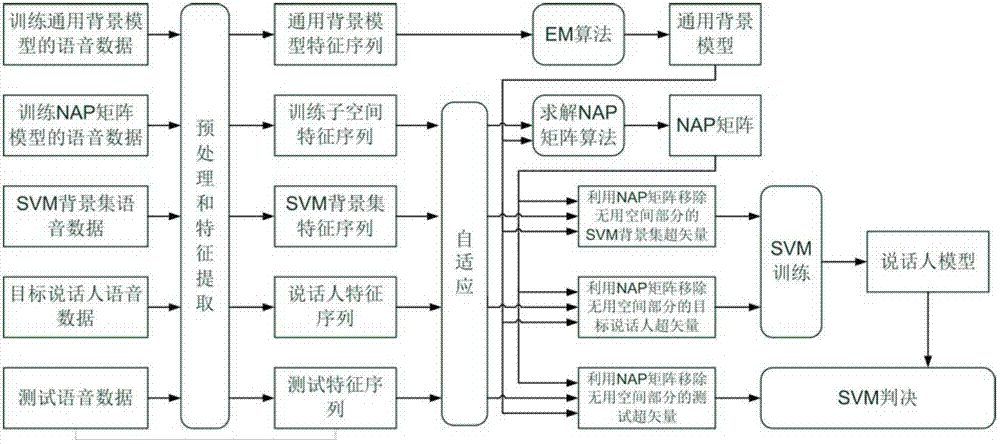Method and device for recognizing speaker based on tensor subspace analysis
A technology of speaker recognition and spatial analysis, which is applied in the field of speaker recognition based on tensor quantum space analysis, can solve problems such as difficulty and computational complexity, and achieve the effect of low complexity and reduced computational load
- Summary
- Abstract
- Description
- Claims
- Application Information
AI Technical Summary
Problems solved by technology
Method used
Image
Examples
Embodiment Construction
[0099] A speaker recognition method and device based on tensor quantum space analysis proposed by the present invention will be described in detail as follows in conjunction with the accompanying drawings and embodiments.
[0100] The present invention proposes a speaker recognition method based on tensor quantum space analysis, such as figure 2 As shown, the method includes: training general model stage, training speaker model stage and testing stage; it is characterized in that,
[0101] 1) The general model training phase includes the following steps:
[0102] 1-a) Convert the speech data for training the general background Gaussian mixture model into spectral features through speech preprocessing and feature extraction;
[0103] 1-b) Based on the extracted spectral features, use the K-means or LBG algorithm to initialize the general background Gaussian mixture model;
[0104] 1-c) Utilize the Expectation maximum (EM) algorithm to update the general background Gaussian m...
PUM
 Login to View More
Login to View More Abstract
Description
Claims
Application Information
 Login to View More
Login to View More - R&D
- Intellectual Property
- Life Sciences
- Materials
- Tech Scout
- Unparalleled Data Quality
- Higher Quality Content
- 60% Fewer Hallucinations
Browse by: Latest US Patents, China's latest patents, Technical Efficacy Thesaurus, Application Domain, Technology Topic, Popular Technical Reports.
© 2025 PatSnap. All rights reserved.Legal|Privacy policy|Modern Slavery Act Transparency Statement|Sitemap|About US| Contact US: help@patsnap.com



